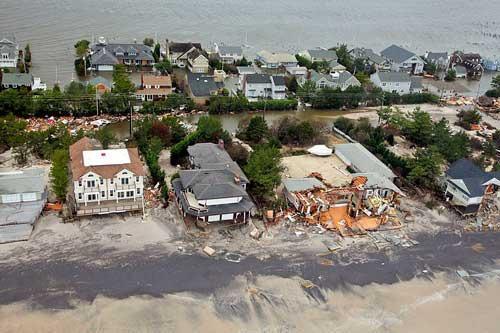By Brendan Cowan
Emergency Management Director for San Juan County
Disasters are in the news again, and for good reason. On the night of Oct. 28, a massive 7.7 earthquake struck off the coast of northern British Columbia. And then a few days later, Hurricane Sandy devastated a major swath of the East Coast.
Both events should be a strong reminder to islanders about the importance of being prepared. Ignore the reminder if you want, but know that you do so at your own peril.
The B.C. quake is an obvious wake-up call to the fact that we live in earthquake country. That quake hit a remote and sparsely populated area, but it could have happened anywhere along the fault that parallels the Washington coast or even along one of the many fractures that run through western Washington. It could have been much worse. And one day it will be.
And what will the impacts of that quake look like? You only need to look to Hurricane Sandy to understand. A major quake, possibly followed by a tsunami. Homes destroyed, power out, shortages of fuel and food, transportation knocked out, businesses impacted, schools struggling to open, and countless communities fighting to recover, tempers frayed and patience tested.
The quake that eventually wallops the northwest will shake us deeply, and the best way to ensure a smooth recovery is for all of us to be aware of the danger and be prepared for it when it comes. If we all do what we can now, we’ll be able to care of ourselves and each other- and that is the island way.
Getting ready for disasters is a funny business. Almost everyone struggles with preparing for things that feel abstract and distant. Unfortunately we can’t predict earthquakes like we can forecast hurricanes. We only know that there’s a 100 percent chance of one happening here someday. We don’t know when, but that alone should be scary enough to motivate you to prepare.
The good news is that preparing isn’t especially difficult. Everyone needs the following: food and water for seven days; a way to stay warm if power is out; flashlights and a radio. Know how to shut off your utilities. Preparing for the quake is really no different than preparing for the winter storms that happen much more frequently. There’s no good reason not to prepare.
For more info on preparing, visit www.sanjuandem.net/prepare. And to learn more about quakes and tsunamis, go to www.sanjuandem.net/quakefaq.
Contact our office at dem@sanjuandem.net or 370-7612 if you need help or have questions.
The important thing is to start today.




